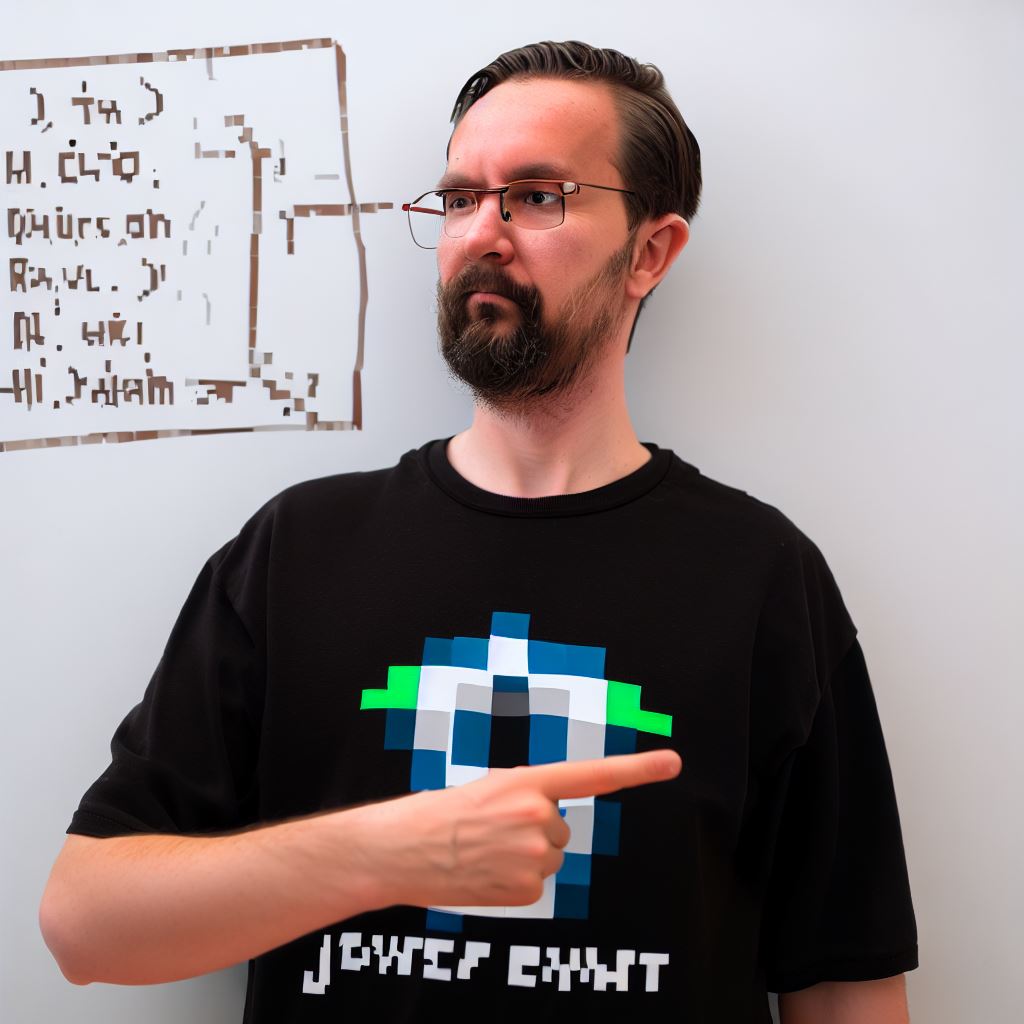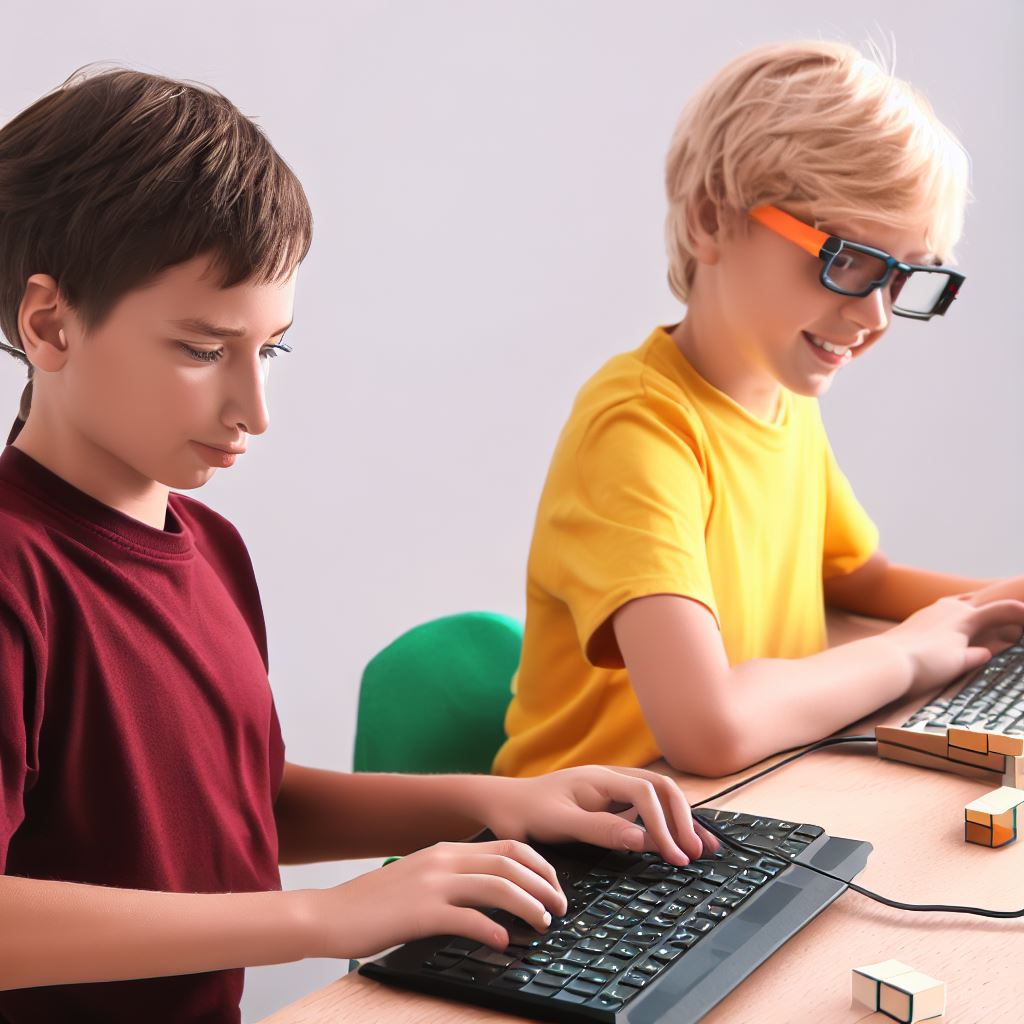Introduction
Minecraft, the wildly popular sandbox game, has gained significant recognition for its educational value.
In this blog post, we will explore the benefits of using Minecraft as a tool for teaching Java.
Minecraft’s popularity has soared, captivating millions of players worldwide, including children and adults alike. Its immersive and interactive nature makes it an ideal medium for learning.
Now, let us delve into the topic at hand: the advantages of integrating Minecraft into Java teaching lessons.
By leveraging the game’s features, we can enhance the learning experience and engage students on a deeper level.
Through Minecraft, students can actively apply Java concepts, including variables, loops, and conditional statements, in a practical environment.
The game presents real challenges that encourage problem-solving and critical thinking, fundamental skills in programming.
Moreover, Minecraft’s visual interface allows learners to grasp complex concepts more easily.
They can see the direct impact of their Java code in the game, reinforcing their understanding and boosting their confidence.
Collaboration is another crucial aspect Minecraft fosters. By working on shared projects, students can practice teamwork, communication, and project management skills, valuable abilities in the software development industry.
In addition, Minecraft’s modding community provides a wealth of resources, tutorials, and plugins that further enhance the learning process.
Students can explore and customize the game, applying and experimenting with Java concepts in a practical and engaging manner.
Overall, leveraging Minecraft as a teaching tool for Java offers numerous benefits, such as active learning, visual engagement, collaboration, and access to a supportive community.
The following sections will delve deeper into each advantage, providing insights and practical tips for educators.
The Relationship Between Minecraft and Java
Minecraft, the popular sandbox game, is written in Java, making it an ideal platform for learning Java programming.
Tech Consulting Tailored to Your Coding Journey
Get expert guidance in coding with a personalized consultation. Receive unique, actionable insights delivered in 1-3 business days.
Get StartedJava, as the programming language used to create modifications (mods) for Minecraft, is essential for enthusiasts who want to customize the game.
Understanding Java is crucial for Minecraft players who wish to explore the game’s endless possibilities and develop their own mods.
Why Minecraft is a Great Tool for Teaching Java
Minecraft’s popularity among both children and adults makes it an engaging and relatable educational tool.
By integrating Minecraft into Java programming lessons, instructors can capture students’ interest and enhance their learning experience.
Minecraft’s open-world nature allows students to apply Java concepts practically and see immediate results in the game.
The game’s block-based design aligns with the object-oriented nature of Java, facilitating comprehension and hands-on practice.
Minecraft’s modding community provides a wealth of resources, tutorials, and examples for learners of all skill levels.
Through modding, students can gain a deeper understanding of Java syntax, functions, and data structures while having fun in the game.
Using Minecraft as a teaching tool also fosters creativity and problem-solving skills in students.
When creating mods, learners must think critically, plan their code, and troubleshoot any issues that arise.
Furthermore, Minecraft’s collaborative multiplayer aspect encourages teamwork and communication among Java learners.
Students can work together to develop mods, share their creations, and learn from one another’s code.
By incorporating Minecraft into Java lessons, educators can make programming feel less intimidating and more accessible to learners.
Minecraft’s immersive and interactive environment motivates students to persist through challenges and approach coding with enthusiasm.
Build Your Vision, Perfectly Tailored
Get a custom-built website or application that matches your vision and needs. Stand out from the crowd with a solution designed just for you—professional, scalable, and seamless.
Get StartedMoreover, Minecraft’s constant updates and new features provide ongoing opportunities for learners to explore and expand their Java skills.
As Minecraft continues to evolve, students can adapt their mods, enhancing their understanding of Java concepts and practices.
To summarize, the relationship between Minecraft and Java is symbiotic, with Minecraft serving as an effective tool for teaching the programming language.
By leveraging the game’s popularity and inherent educational qualities, instructors can engage students and facilitate a deeper understanding of Java.
Minecraft’s wide range of possibilities and its vibrant modding community make it a valuable resource for both novice and experienced programmers.
So, whether you’re a Minecraft enthusiast looking to modify the game or an educator seeking an interactive teaching tool, Minecraft is a fantastic option.
Read: Choosing a Language: Coding Websites Sorted by Programming Language
Engaging and Motivating Learning Environment
Minecraft is not just a game, but a tool that can create an engaging and motivating learning environment for students. Its immersive and interactive nature makes learning Java a fun experience.
One of the reasons why Minecraft is a great tool for teaching Java is because of its immersive nature. Students are not just reading a textbook or staring at code on a screen.
They are actively participating in a virtual world, building and creating using Java programming.
The game’s visuals and mechanics also help to illustrate programming concepts effectively. Students can see firsthand how their code affects the world they are building.
For example, they can use functions and loops to create structures or manipulate the environment.
Minecraft’s block-based building system is another aspect that makes learning Java more enjoyable.
The game’s mechanics allow students to experiment and iterate on their code easily.
Optimize Your Profile, Get Noticed
Make your resume and LinkedIn stand out to employers with a profile that highlights your technical skills and project experience. Elevate your career with a polished and professional presence.
Get NoticedThey can quickly see the results of their programming decisions and make adjustments accordingly.
Extensive Minecraft Community and Resources
One of the advantages of using Minecraft as a teaching tool is the extensive community and resources available.
Students can collaborate with others who share the same interest in the game and programming.
The Minecraft community provides a platform for students to connect and share their creations. They can collaborate on projects, ask for help, and learn from each other’s experiences.
This collaborative learning environment fosters creativity and critical thinking.
Additionally, there are many resources available specifically designed for teaching Java through Minecraft.
Educational mods and plugins allow students to further enhance their learning experience.
They can explore pre-existing code and modify it to suit their needs, reinforcing their understanding of Java programming principles.
Teachers can also take advantage of the numerous tutorials and lesson plans available online.
These resources provide step-by-step guides on how to incorporate Minecraft into the classroom effectively.
They offer a structured approach to teaching Java using the game as a hands-on to
Basically, Minecraft is a great tool for teaching Java due to its engaging and motivating learning environment.
The game’s immersive and interactive nature, combined with its visuals and mechanics, effectively illustrate programming concepts.
Furthermore, the extensive Minecraft community and resources available enhance collaborative learning opportunities for students.
They can connect with others, share their creations, and learn from each other’s experiences. The use of Minecraft as a teaching tool opens up a world of possibilities for both students and educators.
Using Minecraft as a teaching tool for Java can provide students with practical application and hands-on experience.
Read: Quick Tips to Maximize Learning from Online Coding Websites

Practical Application and Hands-On Experience
One of the greatest benefits of using Minecraft to teach Java is the ability for students to apply the concepts they learn in real-world scenarios.
By using Java to customize and create mods within the game, students can see firsthand how coding can impact the gameplay and functionality of a software program.
When students can see the direct impact of their code on a familiar and engaging platform like Minecraft, it enhances their learning experience and helps solidify their understanding of Java programming principles.
They can experiment, test theories, and see the results immediately within a dynamic and interactive environment, leading to a deeper comprehension of Java coding concepts.
A. Ability to Create Mods and Customize the Game
Minecraft’s open-source nature and extensive modding community make it an ideal platform for students to learn Java.
With Java being the primary programming language used to create mods for Minecraft, students have the opportunity to develop their coding skills while customizing the game according to their preferences.
By creating mods, students can add new features, change the game mechanics, or even create entirely new game modes within Minecraft.
This creative freedom allows students to explore their imagination and problem-solving abilities, as they need to design and code their mods to accomplish specific objectives or overcome challenges.
As students work on their Minecraft mods, they learn how to navigate through complex codebases, test their modifications, and debug any potential issues that arise.
These skills are invaluable for any aspiring programmer, as they provide hands-on experience and foster a deep understanding of software development processes.
B. Potential for Developing Problem-Solving and Critical Thinking Skills
Minecraft-based Java projects encourage students to think critically and solve problems. When faced with a challenge or objective within the game, students must leverage their Java skills to create custom solutions.
This process involves breaking down the problem, analyzing its requirements, and designing an efficient and effective solution.
Students develop problem-solving abilities and critical thinking skills as they encounter obstacles while working on their Minecraft-based Java projects.
They learn to identify patterns, apply logical reasoning, and debug their code to achieve the desired outcomes.
These skills are transferable to real-world problem-solving scenarios, making Minecraft an excellent tool for fostering an analytical mindset.
Moreover, Minecraft’s collaborative multiplayer mode allows students to work together on Java projects, promoting teamwork and communication.
Students can discuss ideas, share their knowledge, and support each other in solving complex coding problems.
This collaborative environment encourages students to become effective communicators, strengthening their ability to explain and defend their coding decisions.
In a nutshell, Minecraft serves as an engaging and versatile platform for teaching Java as it provides students with practical application and hands-on experience.
By customizing the game through mods and working on Java projects within Minecraft, students can develop problem-solving and critical thinking skills that are invaluable in the realm of programming.
Read: The Link Between Coding Hours and Software Quality
Incremental Learning and Scaffolded Challenges
Minecraft, the popular sandbox game, can be a powerful tool for teaching Java programming.
By leveraging the game’s progressive gameplay and scaffolded challenges, educators can create a dynamic learning environment that fosters incremental learning and reinforces key concepts.
A. Outline of Minecraft’s Progressive Gameplay
Minecraft’s gameplay is inherently progressive, as players begin with limited resources and gradually unlock more advanced tools and materials.
This natural progression enables learners to build on their knowledge and skills as they explore and navigate the game world.
B. Introducing and Reinforcing Java Concepts through Challenges
One of the unique aspects of Minecraft is the ability to create custom challenges and tasks within the game.
This feature allows educators to scaffold Java concepts by designing challenges that require players to apply programming principles to solve problems within the game.
For example, a challenge could involve creating an automated system using Redstone, Minecraft’s in-game equivalent of electrical circuits.
This task would require players to understand variables, loops, and conditionals in Java in order to program the Redstone circuit to perform specific actions.
Similarly, designing in-game puzzles that require players to manipulate blocks, interact with entities, or build complex structures can reinforce Java concepts related to object-oriented programming, data structures, and algorithmic thinking.
C. Examples of Minecraft Tasks for Teaching Java
Here are a few specific examples of Minecraft tasks that educators can use to teach Java:
- Create an automated farm system that uses Java programming to optimize crop growth and harvesting.
- Build a redstone contraption that sorts items into different chests based on their attributes, such as color or type.
- Design a puzzle where players have to program a sequence of actions using Java code to unlock a hidden treasure.
- Challenge students to build a multiplayer mini-game that requires Java programming to control game mechanics and interactions.
By integrating these tasks into the Minecraft gameplay experience, learners are engaged in hands-on, interactive programming activities that directly apply Java concepts in a fun and practical context.
Minecraft’s incremental learning and scaffolded challenges make it an excellent tool for teaching Java programming.
By leveraging the game’s progressive gameplay and designing custom tasks, educators can create a dynamic learning environment that fosters incremental learning and reinforces key Java concepts.
The hands-on nature of these activities in Minecraft not only makes learning more engaging but also provides practical experience in applying programming principles to real-world scenarios.
So, why not explore the endless possibilities of using Minecraft as a teaching tool for Java?
Read: Advanced Courses: Best Coding Websites for Seasoned Programmers
Fostering Creativity and Project-Based Learning
One of the major advantages of using Minecraft as a teaching tool for Java programming is its ability to foster creativity and facilitate project-based learning.
Minecraft encourages learners to think outside the box and showcase their programming skills through unique creations.
By integrating Java coding with Minecraft, students have the opportunity to create and customize their own structures, items, and game mechanics.
This allows them to apply their knowledge of Java in a practical and hands-on way, making the learning process more engaging and enjoyable.
The potential for project-based learning in Minecraft is immense. Teachers can assign Minecraft-related Java coding projects that challenge students to design and implement various features within the game.
For example, students can be tasked with creating a custom weapon or implementing a new game rule using Java.
By working on these projects, learners not only reinforce their Java knowledge but also develop problem-solving skills and critical thinking abilities.
They learn to identify coding challenges, come up with creative solutions, and collaborate with their peers to achieve their goals within the Minecraft environment.
The range of possible Minecraft projects that can be undertaken to reinforce Java knowledge is vast.
One popular project is building complex Redstone contraptions, which require a deep understanding of Java programming logic.
Students can create circuits, traps, and mechanisms within Minecraft using Redstone, a block that acts as an electrical conductor.
Another exciting project idea is designing custom game mechanics. Students can code their own mini-games within Minecraft, such as capture the flag or treasure hunts, using Java.
This not only sharpens their programming skills but also fosters creativity and innovation as they come up with unique game rules and objectives.
Additionally, Minecraft enables learners to collaborate and share their creations with others.
Students can showcase their unique designs and projects in the Minecraft community, receiving feedback and recognition from fellow players and programmers.
This sense of community and sharing further enhances the learning experience and motivates students to explore new possibilities.
Minecraft serves as an excellent platform for teaching Java programming due to its ability to foster creativity and facilitate project-based learning.
By integrating Java coding into Minecraft, students can showcase their programming skills through unique creations and undertake a wide range of projects to reinforce their Java knowledge.
The combination of hands-on learning, problem-solving, and collaboration within Minecraft creates an engaging and effective learning environment for learners of all ages.
Conclusion
Minecraft is an exceptional tool for teaching Java programming. Throughout this blog post, we have discussed several main points that highlight its effectiveness.
Firstly, Minecraft provides a practical and engaging platform for students to learn Java. By actively coding and creating within the game, they can apply their knowledge in a hands-on manner.
Secondly, Minecraft fosters problem-solving and critical thinking skills. Through challenges and complex tasks, students are encouraged to think logically and find innovative solutions.
Additionally, Minecraft offers a collaborative learning experience. Students can work together, share their ideas, and help each other debug and troubleshoot their Java code.
Furthermore, Minecraft’s popularity among young learners makes it an ideal tool for teaching Java.
It captures their interest and enthusiasm, motivating them to dive deeper into programming concepts.
Overall, using Minecraft as a teaching tool for Java provides numerous benefits.
It makes learning more enjoyable and practical, enhances problem-solving skills, promotes collaboration, and sparks interest in programming.
We encourage readers to explore the combination of Minecraft and Java for enhanced programming education opportunities.
By utilizing this unique approach, educators can unlock the potential for immersive and effective Java instruction.




